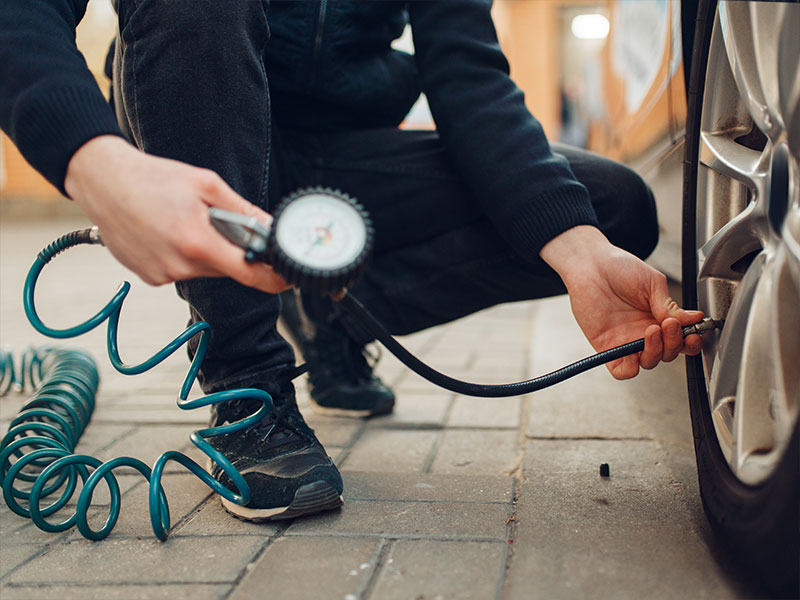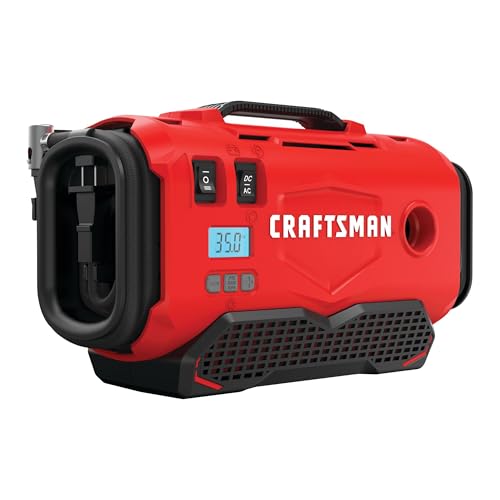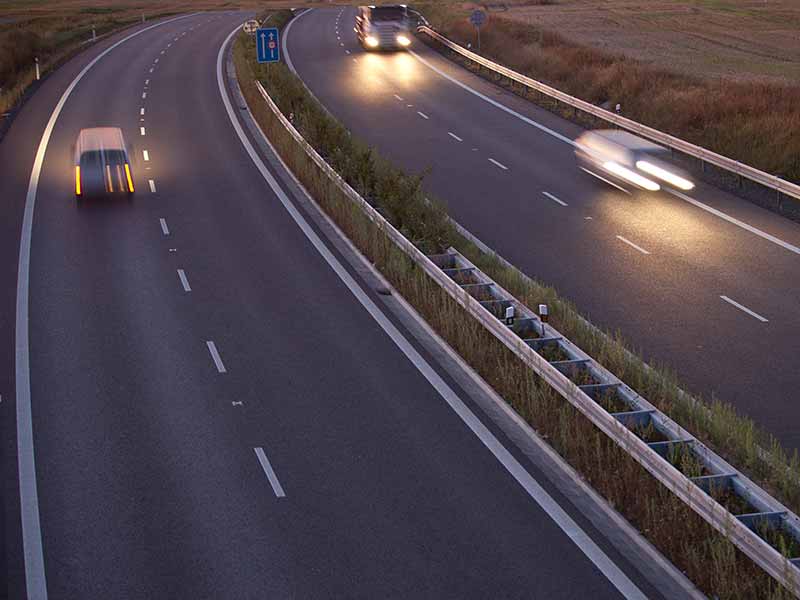Picture this: you’re cruising down the highway on a beautiful, sunny day. The radio is playing your favorite tunes, and the wind is blowing through your hair. But then, a thought pops into your head, “What if my tire pressure is not right?” After all, you’ve heard that tire pressure can make a big difference when it comes to safety, fuel economy, and even tire longevity. So, what’s the scoop? What is the best tire pressure for highway driving?
Best Tire Pressure For Highway Driving
The best tire pressure for highway driving is the tire pressure recommended by your vehicle’s manufacturer. This recommendation ensures optimal safety, fuel economy, and tire longevity.
In this article, we’ll delve into the world of tire pressure. We’ll cover everything from understanding the basics of tire pressure to how it affects your fuel economy and even how highway driving impacts your tires. We’ll also bust some myths about overinflating and underinflating your tires, and provide some key takeaways to keep your car running smoothly and efficiently on the highway.
Let’s take a closer look.

Understanding Tire Pressure
Tire pressure might seem like a minor thing, but it plays a major role in how your vehicle runs. Let’s dive into the nitty-gritty of it!
Tire pressure is simply the amount of air in your tire, which is usually measured in pounds per square inch, or PSI for short. It’s like blowing up a balloon – the more air you put in, the harder the balloon gets. The same concept applies to your tires. But, unlike a balloon, you can’t judge a tire’s pressure just by giving it a squeeze. That’s where a tire pressure gauge comes in handy.
Every vehicle has a ‘just right’ tire pressure, sort of like Goldilocks and her porridge. This optimal tire pressure varies based on the vehicle’s weight, size, and the type of tire it uses. Your vehicle’s manufacturer knows best and provides recommended tire pressure in the owner’s manual.
Here’s a fun fact: you can usually find this recommended pressure on a sticker inside your driver’s side door, or sometimes inside the glove box. This number is usually between 30 and 35 PSI for most passenger cars, while trucks might run a bit higher due to their weight.
Maintaining this ‘just right’ tire pressure is essential for a few reasons:
- Safety: Properly inflated tires provide the best traction and handling, keeping you safe on the road. Plus, incorrect tire pressure can lead to uneven tire wear and even blowouts. Yikes!
- Comfort: Have you ever ridden a bicycle with low tire pressure? It’s a bumpy, uncomfortable ride, isn’t it? Your car feels the same way with low tire pressure.
- Fuel Economy: Yes, your tire pressure can even affect how much you spend at the gas station. But we’ll get more into that in the next sections.

Does Highway Driving Increase Tire Pressure?
If you’ve ever wondered whether highway driving could increase your tire pressure, you’re about to get your answer. So, buckle up!
Here’s the scoop: when you’re zipping along the highway at high speeds for an extended period, your tires get hotter. This is simply because they’re working harder. The air inside your tires also heats up, and here comes the science part – when air heats up, it expands. That means the pressure inside your tire goes up. So, yes, highway driving can increase tire pressure.
But wait, there’s more! The increase in tire pressure due to highway driving isn’t usually something to worry about. It’s completely normal, and tires are designed to handle this change. Your recommended tire pressure already takes this into account. That’s why it’s best to check your tire pressure when the tires are ‘cold,’ or haven’t been driven on for at least a few hours. This gives you the most accurate reading.
However, if you’re going on a long road trip or regularly drive on highways, it’s good to keep an eye on your tire pressure. Here are a few tips:
- Check your tire pressure regularly: This is the key to maintaining ‘just right’ tire pressure. Try to make it a habit of checking it at least once a month.
- Remember to check when ‘cold’: Like we said before, check your tire pressure when the tires are cold for the most accurate reading. That means before you hit the highway, not after.
- Adjust as needed: If your tire pressure is too high or too low, adjust it to the recommended pressure in your vehicle’s manual. You can do this at most gas stations or with a portable air compressor.

I Recommend Every Keep A Portable Air Compressor In Their Car Or Truck
Best Tire Pressure For Fuel Economy
Now, let’s talk about something that affects every driver out there – fuel economy. Believe it or not, your tire pressure has a big impact on how many miles per gallon, or MPG, you can get out of your ride.
First, let’s clear up a common myth: cars with properly inflated tires use more fuel. That’s actually not true! Here’s why: when your tires are at the right pressure, they have an optimal ‘contact patch’ with the road. This is the area of the tire that’s actually touching the ground. When this contact patch is just right, your car can roll along the road with the least resistance. This means the engine doesn’t have to work as hard, which can save you some serious cash at the gas station.
On the flip side, if your tires are underinflated, the contact patch is larger. It’s like trying to walk in sand – you have to work harder, right? Your car’s engine feels the same way when your tires are underinflated. It has to work harder to get you down the road, which uses more fuel.
Overinflated tires are a bit of a different story. The contact patch is smaller, which might sound like a good thing for fuel economy. But hold your horses – overinflated tires can make your car bounce along the road instead of roll, which can actually increase rolling resistance. Plus, overinflated tires can wear unevenly and reduce your vehicle’s grip on the road, which is a big no-no for safety.
So, here are some takeaways to keep your fuel economy in the green:
- Check your tire pressure regularly: We’re saying it again because it’s that important. Remember to check when the tires are cold for the best accuracy.
- Stick to the recommended tire pressure: Your car’s manual knows best. Sticking to the recommended tire pressure will give you the best fuel economy.
- Don’t forget to adjust: If your tire pressure is off, adjust it. Your wallet will thank you.

The Impact of Overinflating Tires
So you’ve heard the rumors: “Overinflate your tires and save gas!” But is it really that simple? Let’s pop this myth and get into the real deal about overinflated tires.
First off, let’s clarify what we mean by overinflating. When we say a tire is overinflated by 2 PSI or 5 PSI, it means the tire’s pressure is 2 or 5 PSI over the manufacturer’s recommended pressure. But what does that do?
You might think more pressure = less contact with the road = less resistance = more MPG, right? Well, not so fast. While it’s true that overinflated tires have a smaller contact patch with the road, this isn’t necessarily a good thing.
Here’s why: when a tire is overinflated, it becomes more rigid and less able to flex with the road. This can make your car bounce instead of roll, which can actually create more resistance. Plus, it can cause the middle of your tire to wear down faster than the edges. This not only shortens the life of your tires but also compromises your vehicle’s grip on the road. Double whammy!
But what about fuel economy? Doesn’t overinflating tires save gas? The answer is a bit complicated. While there might be a slight improvement in fuel economy with overinflated tires, the potential risks often outweigh the benefits. Decreased traction, uneven tire wear, and a bouncy, uncomfortable ride can make a few extra miles per gallon not worth it.
Here are a few key takeaways:
- Stick to the recommended tire pressure: Your car’s manual gives the best advice. It’s usually not worth it to go above this number.
- Check your tire pressure regularly: You’ve heard it before, and you’ll hear it again! It’s the best way to prevent overinflation.
- Stay safe on the road: Your safety and the safety of others on the road is the most important thing. Overinflating your tires can compromise this.
The Consequences of Low Tire Pressure
Let’s get into another tire pressure scenario now – what happens when your tires are underinflated, or don’t have enough air pressure? You’re about to find out!
Think of your car’s tires like a pair of shoes. If they’re too big (overinflated), they’re uncomfortable and you might trip. But if they’re too small (underinflated), they’re just as uncomfortable and you have to work harder to walk. The same principle applies to your car.
When tires are underinflated, their contact patch with the road is larger than it should be. This means your car has to work harder to move, which uses more fuel. Yep, low tire pressure can actually decrease your gas mileage. And let’s be real, nobody wants to spend more money at the gas station.
But it’s not just about fuel economy. Low tire pressure can also affect your car’s handling and safety. Tires that are low on air can’t hold their shape as well and may not respond as quickly or accurately to steering. That’s a big deal when you’re zooming down the highway!
Plus, underinflated tires can wear out faster and more unevenly because more of the tire is in contact with the road. And nobody wants to buy new tires sooner than they need to!
Here’s what you can do to avoid the pitfalls of low tire pressure:
- Check your tire pressure regularly: It’s the golden rule of tire maintenance. If you do it once a month, you’ll be in good shape.
- Keep your tires pumped: If you find your tires are underinflated, fill them up to the recommended pressure in your vehicle’s manual. You can do this at a gas station or with a portable air compressor.
- Drive safe and save money: Maintaining the correct tire pressure will help keep you safe on the road and save you money at the pump.
Resources
Below are some links you may find helpful when learning about tires
- How to adjust tire air pressure for high speed driving – Tire Rack
- Determining the right psi – Tire Review
Final Thoughts
And just like that, we’re back to that sunny day on the highway, with your favorite tunes playing and the wind in your hair. But this time, you’re cruising with confidence, knowing that your tire pressure is just right.
The key takeaway from our journey into the world of tire pressure? Stick to your vehicle’s recommended tire pressure for the optimal balance of safety, fuel economy, and tire longevity. It’s a simple but powerful way to ensure a smooth and efficient ride, whether you’re on the highway or city streets.
Good luck and happy motoring.




